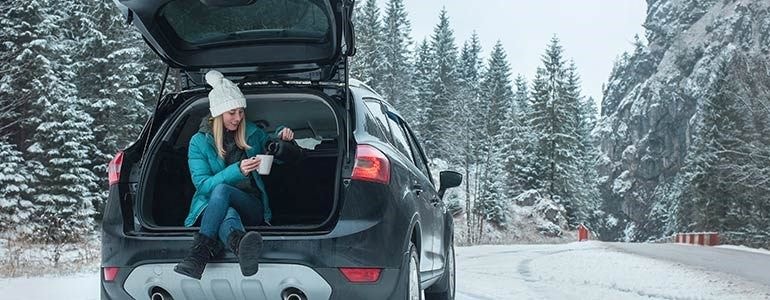Driving in the winter with rain, wind & snow
The winter is here and that means bad weather. Driving under adverse weather conditions requires additional precautions for your journeys. To follow we offer some tips for driving with the rain, wind or snow.
-
Plan your route beforehand
Driving with heavy rain, wind or snow can be overwhelming. We recommend if possible that you plan your route before you leave and locate the service areas available to you in case you need to stop due to low visibility. It is also important to take your time, so, if you need to be somewhere at a certain time, give yourself plenty of time to reach your destination. Driving in bad weather usually makes your journey time longer.

-
Make sure that you have all the necessary equipment
If you have to drive through mountain areas where it generally snows, make sure that you have snow chains with you. There are many roads where it is mandatory in winter to prevent accidents. Before you leave, make sure that you have your snow chains in the boot and that you know how to use them. You must also carry a spare wheel, triangle and reflective vest inside the car.
-
Moderate your speed and increase the distance between other vehicles
It may seem obvious, but in bad weather, you must reduce your speed to avid the car from skidding. On many roads, you will see information panels that reduce the maximum speed in conditions of rain, wind or snow to help prevent accidents. It is also advisable to increase the safety distance to the vehicle in front of you, as the breaks take longer to respond in cold atmospheres.

-
Pay attention to the information panels and listen to the radio
When driving in the winter, there are usually more delays than usual because of the weather conditions. The information panels are especially useful to tell you how much driving time you have to your destination or to know why there is a delay on the road. It is also useful to have the radio on so you can get up to date information regarding any roads that may have a problem and then, if possible, you can change your route to avoid traffic queues.
-
Use long gear changes
If you drive a car with a manual gearbox, change gears as gently as possible using long gear changes to help prevent the car from skidding. This is recommended when going up hills or roads with sharp turns and to help control the car at all times.
-
Do not use your rear fog lights
If visibility is low, it is important to use your fog lights, but only the front ones. If you use your rear ones this may blind the drivers behind you.
-
If you need to, stop the car
Lastly, but just as important, if you are tired or the rain, wind or snow makes it too dangerous to continue, then do not hesitate to stop the car. It does not matter how much time you spend waiting for the weather to pass, it is not worth putting yourself at risk. It is better to arrive a little late especially when the conditions are too dangerous.